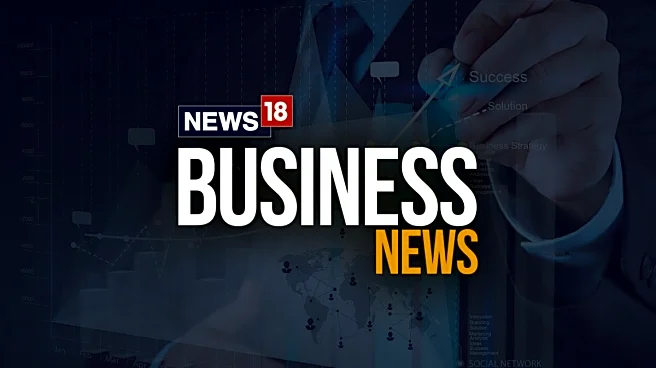By now, your email inbox and social media feeds are overflowing with banners announcing “Black Friday Mega Deals”, “Cyber Week Offers”, and “Once-a-Year Prices”. What started decades ago as a post-Thanksgiving sales day in the US has quietly become a global retail season, and India is now fully part of its growing footprint.
From Amazon, Flipkart, and Myntra to Zara, Nykaa, Apple, and even airline websites, nearly every brand is promising “unmissable deals”. But are these discounts really that spectacular? Or are we witnessing one of the world’s most successful marketing strategies disguised as savings?
A BBC investigation along with consumer group Which? analysed hundreds of so-called Black Friday discounts in the UK and discovered that most
deals were either the same price or cheaper at other times of the year. The pattern is not very different in India.
During previous Diwali and Republic Day sales, price trackers revealed that several products promoted as “72% off” or “lowest-ever price” had seen similar or lower pricing months earlier, without the flashy countdown banners and urgency slogans.
Yet, millions of Indian consumers wait for this period to buy phones, gadgets, laptops, clothing, beauty products, appliances, and even airline tickets. Somewhere between genuine savings and psychological pulling power lies the real story of Black Friday in India.
Why Black Friday Is Suddenly Everywhere In India
India never celebrated Thanksgiving, so how did Black Friday become a billion-view shopping buzzword here?
The answer lies in India’s rapidly globalising shopping behaviour. More Indians today buy directly from international websites like Amazon US, Best Buy, eBay, ASOS, and AliExpress than ever before. International airlines such as Emirates, Qatar Airways, and Turkish Airlines also actively push Black Friday prices, often much lower than what Indian travel portals offer.
Moreover, the global shipping and India-friendly payment options, and suddenly, the Indian buyer becomes part of the world’s biggest sale movement, whether they celebrate Thanksgiving or not.
There is also a cultural shift at play. Metros such as Bengaluru, Mumbai, Delhi, Pune, Hyderabad, and Chennai now have high numbers of young professionals and students who follow global influencers, tech reviewers, and lifestyle vloggers. When US creators post “Black Friday Haul” or “Best Cyber Monday Laptop Deals”, Indian viewers are no longer just spectators; they are active buyers.
Are The Discounts Actually Real?
The truth is not black or white. Some Black Friday deals are genuinely good, especially on electronics, premium gadgets, gaming consoles, and flight bookings. For example, MacBooks, iPhones, Sony headphones, PlayStation, and Xbox consoles often see their lowest annual pricing during this time, especially when purchased from global websites.
However, categories such as fashion, skincare, small kitchen gadgets, decor items, and accessories often rely on inflated MRPs, strategic timing, and marketing hooks. Many products are priced high months in advance, only to display bigger-looking discounts during the sale. The customer sees “Flat 70% Off”, feels smart for spotting a deal, and checks out, not realising that the item was cheaper two months ago, without the drama.
Retailers also rely on emotional triggers: “Only 3 left”, “Sale ends in 4 hours”, “Last chance to buy”, “Over 25,000 people bought this today”, creating a sense of scarcity, urgency, and instant validation.
Where Are The Real Benefits For Indian Shoppers?
The biggest advantages arise when people know where and how to look. Tech products, airline tickets (especially international ones), hotel bookings on global sites, high-performance laptops, big-screen TVs, gaming consoles, and premium audio devices often deliver real savings during the Black Friday-Cyber Monday window. These deals are usually better than what is available during Indian festive sales, which tend to focus more on fashion, smartphones, appliances, and home décor.
Cross-border shopping is now easier than ever. Forex-friendly bank cards, instant EMI, cashback offers, coupons, and reduced customs duties on certain electronics have made it possible for Indians to legally buy products from Amazon US, Best Buy, and other platforms. Some online shoppers have even purchased high-end gadgets like GoPro cameras and Bose audio products for lower prices than in Indian stores, even after paying shipping and taxes.
How The Sale Psychology Works
Smart marketing does not just sell products; it sells emotions. And Black Friday has mastered that.
You see a price slashed from Rs 29,999 to Rs 14,999, even if the real market price has always been around Rs 15,999. That little red number showing ‘You Saved Rs 15,000’ triggers a rush of satisfaction and a sense of victory, even if the saving was largely fictional. Countdowns, red tags, and notifications saying “4 people purchased this in the last hour” or “Only 1 left” are designed to bypass reasoning and create urgency.
Consumers are not just buying products; they are buying time-sensitive opportunities, social approval, and the thrill of beating the system.
So, Should Indian Shoppers Buy During Black Friday?
It depends on what you are buying. Smartphones and large home appliances like refrigerators and washing machines often get deep discounts during Diwali and Indian Independence Day sales. But deals on MacBooks, iPads, gaming consoles, Apple Watch, international flight tickets, and branded accessories tend to perform best during Black Friday.
Indian travel platforms are picking up on this — several now promote Black Friday fares to Europe, Dubai, Australia, and US destinations, in competition with airline websites.
Meanwhile, fashion deals vary dramatically. While Indian platforms run heavy Diwali discounts, international brands like H&M, Zara, Mango, and Uniqlo often offer better deals on Black Friday, especially for winter clothing.
What Can Be Your Black Friday Strategy?
The biggest mistake Indian consumers make during sales is assuming that every discount is special. Instead of reacting to flashing graphics, it is smarter to verify prices, compare platforms, and track past trends.
It is often said that there is no single “cheapest day of the year”. But there is a lowest price, if you know how and when to look.
That means avoiding impulse buying influenced by marketing tricks, and instead focusing on value-driven, timing-conscious decisions.
In fact, Black Friday has officially moved beyond being just a shopping day. It is now a global retail theatre thanks to technology, psychology, and a genuine savings opportunity. India is very much in the front row now.
For those shopping with awareness, Black Friday can genuinely deliver excellent deals, especially on gadgets, flights, electronics, and premium products. But for those swept away by urgency and flashy banners, it can just as easily turn into overspending disguised as smart saving.






/images/ppid_59c68470-image-17641350398573967.webp)






/images/ppid_59c68470-image-176404511161766878.webp)
